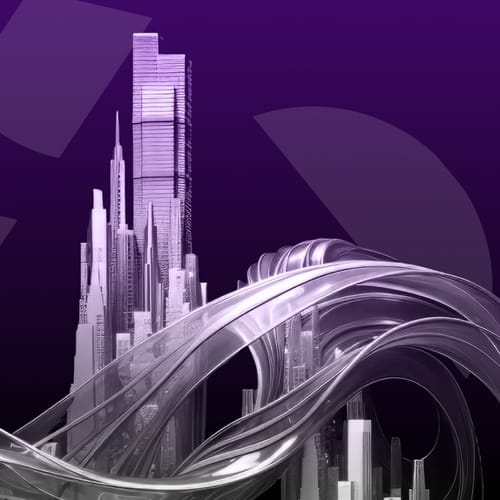Digital asset tokenization has been around since 2017, but it wasn't until a few years ago that it had real meaning, besides NFTs and stablecoins. But this is changing. We're witnessing the influx of companies into the AI and crypto landscapes, with a focus on the real-world assets (RWA) market. In fact, according to several reports, traditional firms are leading the movement.
RWAs are digital representations of physical, tangible, or financial assets such as real estate, bonds, securities, art, commodities, etc. It bridges the gap between traditional finance and blockchain, providing an avenue to seamlessly incorporate both worlds. While that may sound cliche, RWAs are genuinely doing that.
Liquidity, Accessibility, and Ownership—RWAs are Revolutionizing the Game
RWAs facilitate fractional ownership of high-value assets like real estate, commodities, and art. By tokenizing and placing them on the blockchain, it enables fractionalization—a concept where users can own portions, albeit small, of the asset. For companies, tokenization allows them to sell expensive assets in diminutive units, boosting sales and increasing liquidity.
Selling a high-value property anywhere in the world is difficult. Such factors as the limited number of potential buyers, lowball offers, and the dwindling global economy contribute greatly. It takes about 220 to over 319 days to sell a luxury home in the United States. For other luxury items like yachts, it could take over a year and some months to find a buyer.
RWAs and tokenization eliminate this significant challenge. It enhances liquidity by allowing investors to buy fractions of previously deemed high-value assets, increasing the liquidity of illiquid assets like yachts, real estate, and art. Besides this, tokenization greatly promotes global accessibility. RWAs transcend location, and by leveraging the decentralized feature of blockchain, it opens the market to international investors, who ordinarily would never have had access, ergo expanding the pool of potential buyers.
Another thing tokenization brings to the traditional market is ease of use. The paperwork, attorney meetings, surveys, council approvals, and other bogus requirements needed to buy an asset like real estate are extremely tedious. Well, tokenization solves this too. You know how easy it is to trade crypto, right?—logging on to an exchange, adding funds, and buying any crypto of your choice—tokenization will deliver such effortless purchase of RWAs as well.
What Does RWAs Mean for the Crypto Market?
RWAs’ remarkable emergence as the next big trend in the crypto landscape means an influx of institutional investors. When tokenized, they provide investors with a new avenue, an opportunity to access previously closed or inaccessible markets. Fractional ownership of valuable assets opens a window of opportunity for global investors to enter the market, boosting sales, increasing liquidity, and setting the industry on the path of global adoption.
Trust in the crypto industry is at an all-time low, no thanks to malicious and fraudulent actors. With more traditional firms entering the market due to RWAs’ palpable growth, trust is gradually being restored. The tokenized US Treasuries, which has surpassed $5 billion in value, rekindles trust in the industry as more investors are now more willing than ever to enter the market.
Tokenization and RWAs also provide an opportunity for DeFi expansion beyond the scope of cryptocurrencies. By tokenizing RWAs, DeFi can easily blend physical assets into the blockchain, guaranteeing unparalleled accessibility, transparency, enhanced liquidity, and simplicity. It also enables the diversification of portfolios away from the volatile crypto market and into more stable assets like real estate, securities, commodities, art, and bonds.
RWAs also provide a new income-earning source. Through the fractional purchase of expensive assets, investors can venture into yield farming or contribute fractions of their RWAs to liquidity pools to earn interest. Yields in the form of transaction fees are also an impressive income-earning opportunity that tokenization brings to the market and users.
Top RWA Crypto Assets
As the RWA market continues to grow exponentially, a few projects have positioned themselves as leaders of this emerging trend. Some of them include:
- Ondo Finance: This is a decentralized investment bank that serves stakeholders in the DeFi landscape. It is bridging the gap between traditional finance and blockchain by offering tokenized US treasuries and corporate bonds. Ondo Finance is gaining noticeable traction among investors looking for safer, profit-bearing assets.
- Lofty: It allows investors to seamlessly buy US real estate without legal residency status in the country. Lofty is known for transparency and accessibility, promoting a world where investors can own assets, albeit fractional, in the United States.
- Maple Finance: This project focuses primarily on decentralized credit markets, connecting leaders and borrowers through blockchain technology. It offers tokenized loan products backed by real-world assets
RWAs as the “Next Big Thing” Trend in Crypto
RWAs are the next big thing in the crypto space—a whopping $35 billion in market cap is proof. A representation of physical assets on the blockchain, this trend opens the scope for massive industry growth. It is driving the influx of institutional investors that ordinarily would be wary of cryptocurrencies, promoting accessibility on a greater scale, and enhancing liquidity.
While there have been many talks of global adoption and bridging the gap between traditional finance and decentralized finance, some being hackneyed phrases, RWAs, through tokenization, are genuinely pushing the realization of both, albeit in gradual steps.
RWAs could potentially be the key trend of 2025.

